Tap into the Japanese market with English to Japanese translation services
Transform your English content for Japan's market with AI that understands cultural nuances, writing systems, and business etiquette. Transifex offers advanced translation technology that delivers brand-aware localization for the world's third-largest economy.
Book your 30-min demo

Book your 30-min demo

Reach 125+ million Japanese speakers with enterprise-grade localization
Japanese is spoken by over 125 million people worldwide and drives the world's third-largest economy. Whether you're targeting Japan's sophisticated consumer market, expanding into Asia-Pacific regions, or localizing for Japanese communities globally, quality English to Japanese translation directly impacts your market penetration and revenue growth in Japanese-speaking markets.
Why English to Japanese translation requires expert precision
Converting English content to Japanese involves navigating complex writing systems, cultural nuances, and business etiquette that can significantly impact your message effectiveness in Japanese markets.
Here's what makes professional Japanese translation challenging:
Complex writing systems
Japanese combines Hiragana, Katakana, and Kanji, with characters often compressing text 30 to 50 percent compared to English. Sentences use no spaces, relying on fixed patterns. Honorific language (keigo) also changes vocabulary and structure based on hierarchy and relationships.
Cultural adaptation requirements
Japanese business culture emphasizes precision, with most consumers noticing translation errors. Messaging should be indirect and respectful, aligning with group harmony (wa) and consensus. Seasonal and cultural references must also follow the Japanese calendar and customs.
Technical localization challenges
Localization requires vertical text support in some contexts, IME compatibility for input, and full Unicode UTF-8 implementation. Date formats and measurement systems follow Japanese Industrial Standards, which must be reflected in software and content.
Market-specific considerations
Japan’s monozukuri philosophy demands exceptional quality in communication. With 85 percent of internet users mobile-first, design must prioritize smartphones. Payment methods also need localization to include systems like PayPay and convenience store options, alongside local legal compliance.

Transifex is loved by leading organizations worldwide
English to Japanese translation at scale with Transifex
Whether you manage localization projects, develop software, or run marketing campaigns targeting Japanese markets, Transifex streamlines your English to Japanese translation workflow without compromising quality or cultural authenticity.
Here's what makes the difference:
AI that understands Japanese language complexity
Transifex AI recognizes Standard Japanese (ja_JP) following ISO 639-1 and BCP 47 standards. The system automatically adapts vocabulary, honorific levels, and cultural references based on your target audience—using appropriate keigo for business communications while adapting to casual forms for consumer marketing automatically.
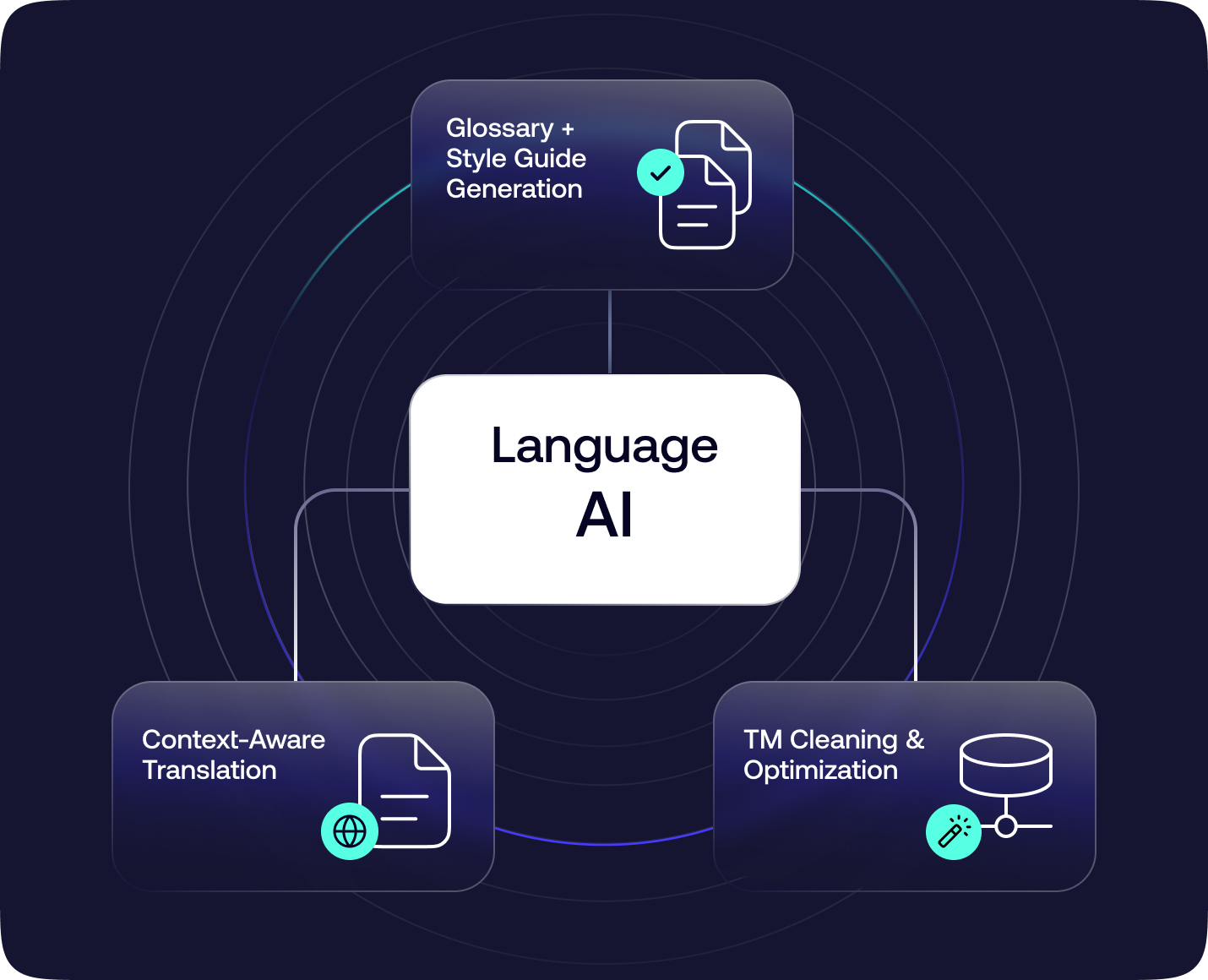
Advanced Translation Memory capabilities
Every approved Japanese translation builds your terminology database using ISO/IEC 15897 standards for locale handling. When you translate "customer support" once as "カスタマーサポート," the system suggests it consistently across all Japanese content while respecting context-specific variations. Fuzzy matching identifies similar Kanji combinations to accelerate translations while maintaining linguistic consistency.
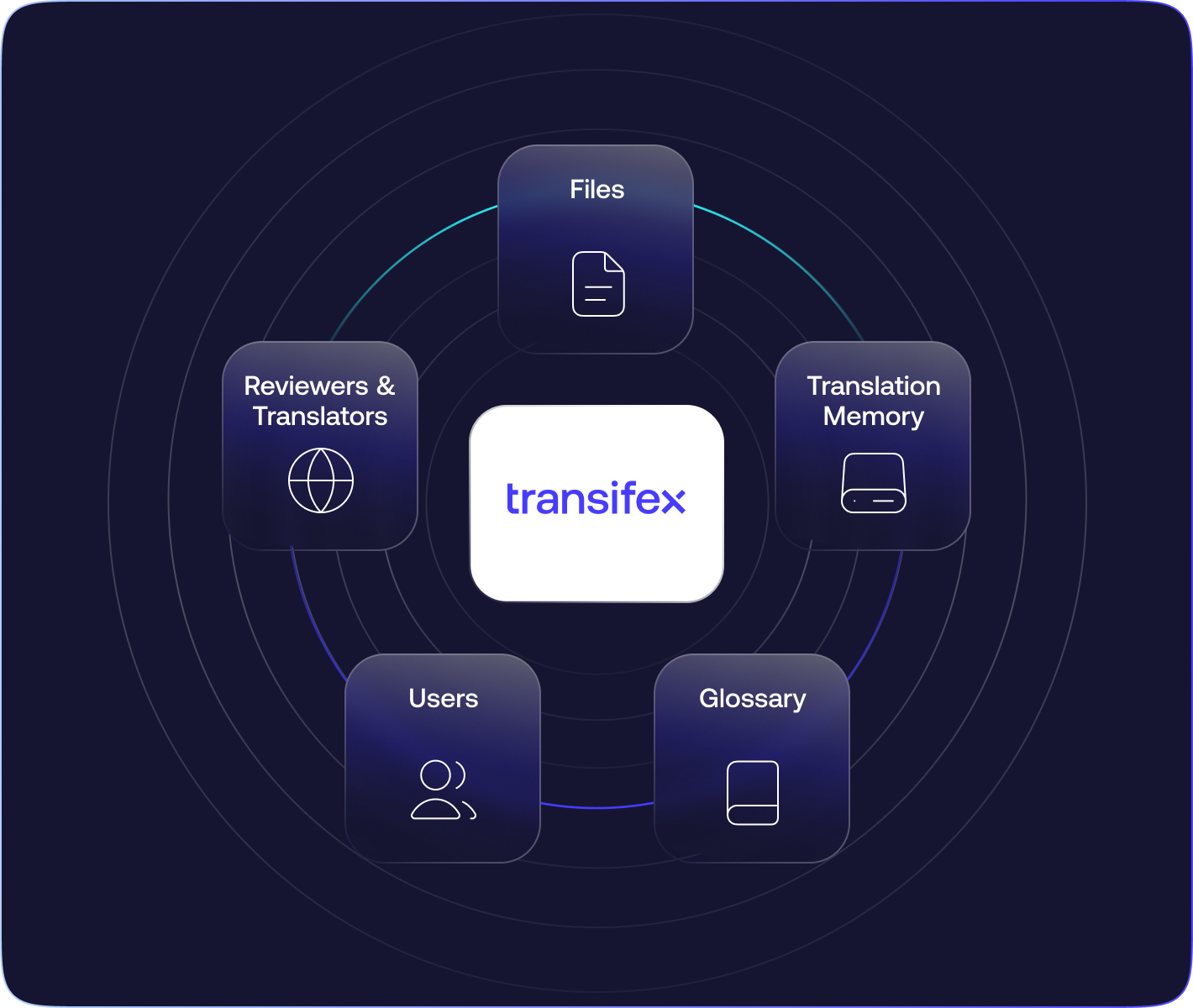
Quality scores you can trust
TQI (Translation Quality Index) automatically evaluates every Japanese translation using three metrics: consistency across language models, structural integrity preserving HTML tags and character encoding, and semantic accuracy. Set thresholds to auto-approve high-quality translations (85%+) while flagging complex Japanese grammar issues for human review.
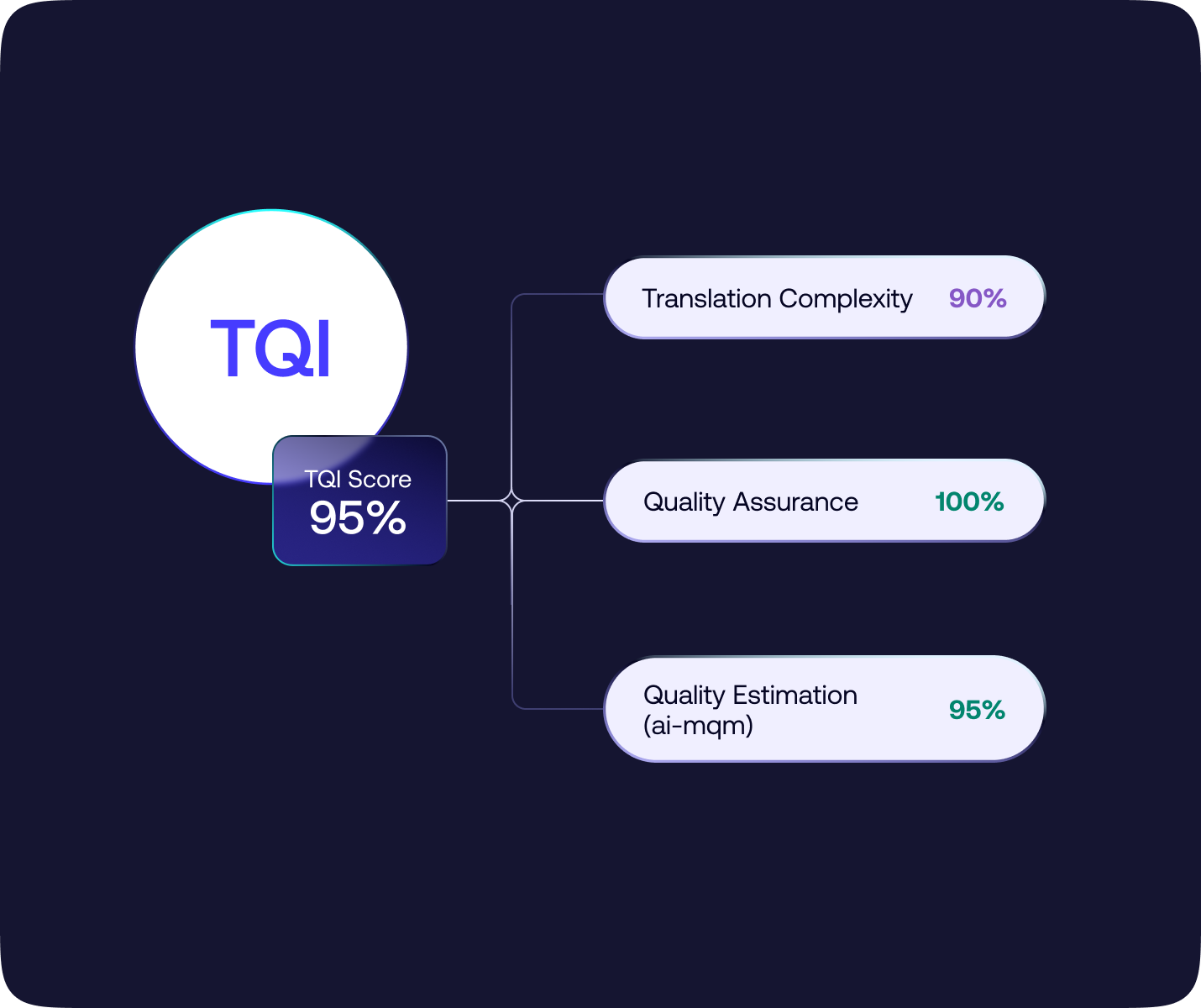
Live website translation
Install one JavaScript snippet and translate your website directly in the browser. See exactly how Japanese text compression affects buttons, menus, and content areas in real-time. Changes go live immediately without developer involvement—perfect for marketing campaigns targeting Japanese markets across consumer and business segments.
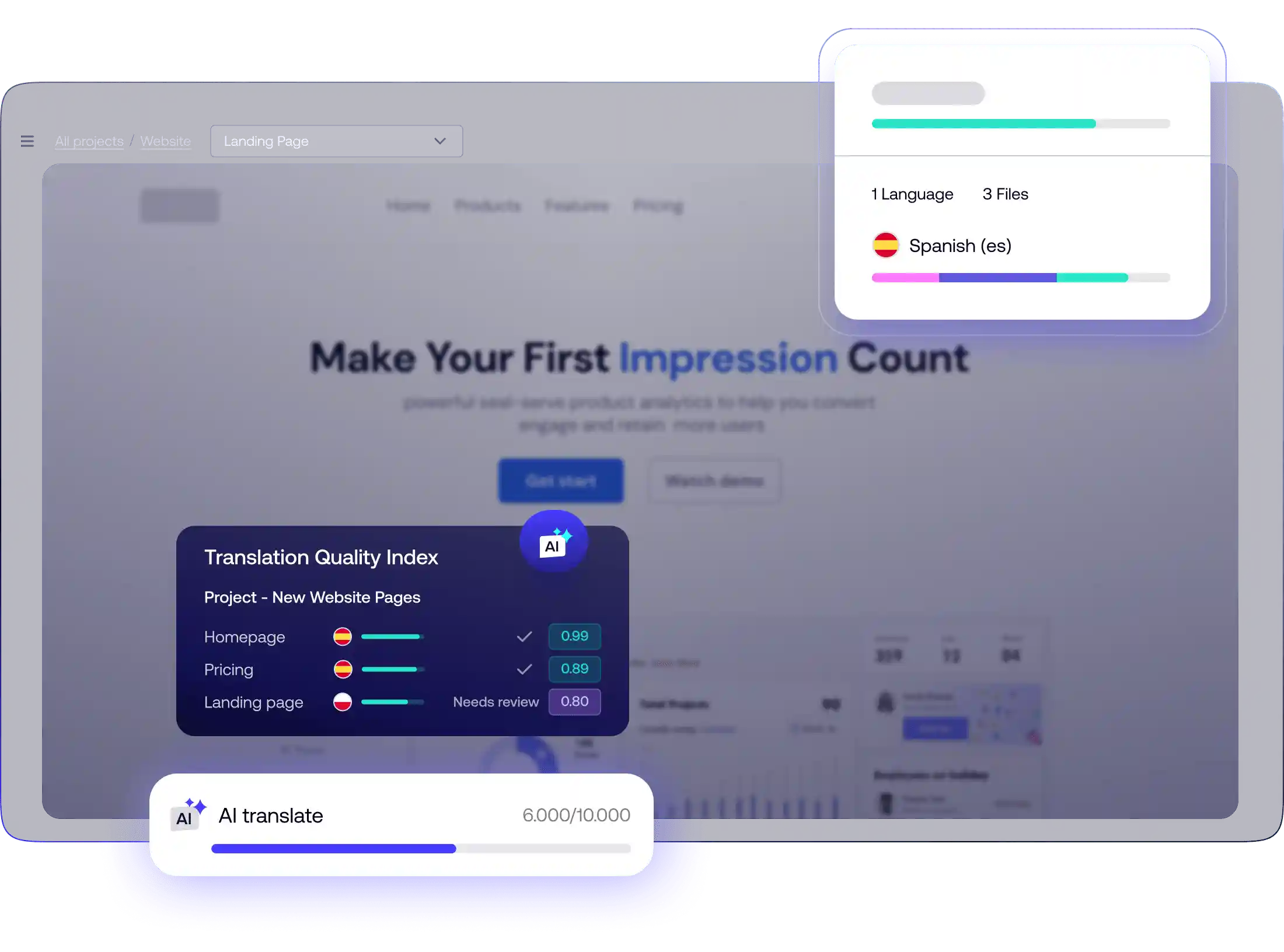




Built for product, marketing, and localization teams alike
Marketing Managers
Launch Japanese campaigns faster
Create localized Japanese content that matches your brand voice across Japan's sophisticated consumer market. With context-aware translations, marketing teams can move fast, stay consistent, and never miss a campaign window targeting Japanese audiences—no dev help required.
Developers
Japanese localization built for agile teams
Take Japanese localization off your backlog with a platform built for high-frequency content updates. Seamlessly integrate into your CI/CD workflow using our extensive API, SDKs, and CLI tools with full ISO standard compliance for Japanese locale handling and Unicode UTF-8 support.
Product Teams
Launch Japan-ready products faster
Accelerate product launches with automated Japanese localization. Integrate seamlessly into your development workflow and ensure your applications speak native Japanese from day one with proper locale handling for Japan market requirements.
Localization Managers
More efficiency, more localized Japanese content
Localize more Japanese content with less effort on an all-in-one platform. Bring all stakeholders together, streamline collaboration, and deliver authentic, on-brand Japanese translations efficiently for Japan market expansion while maintaining ISO 17100:2015 quality standards.
AI translation that masters Japanese linguistic complexity
Transifex supports over 450 language locales following ISO 639-1 standards, including Japanese variants like ja_JP (Japan) with full Unicode CLDR data for proper pluralization handling. The AI recognizes when to use "コンピューター" vs "パソコン" for computer, or appropriate honorific forms depending on your specific Japanese market context.
Transifex features designed for Japanese localization excellence:
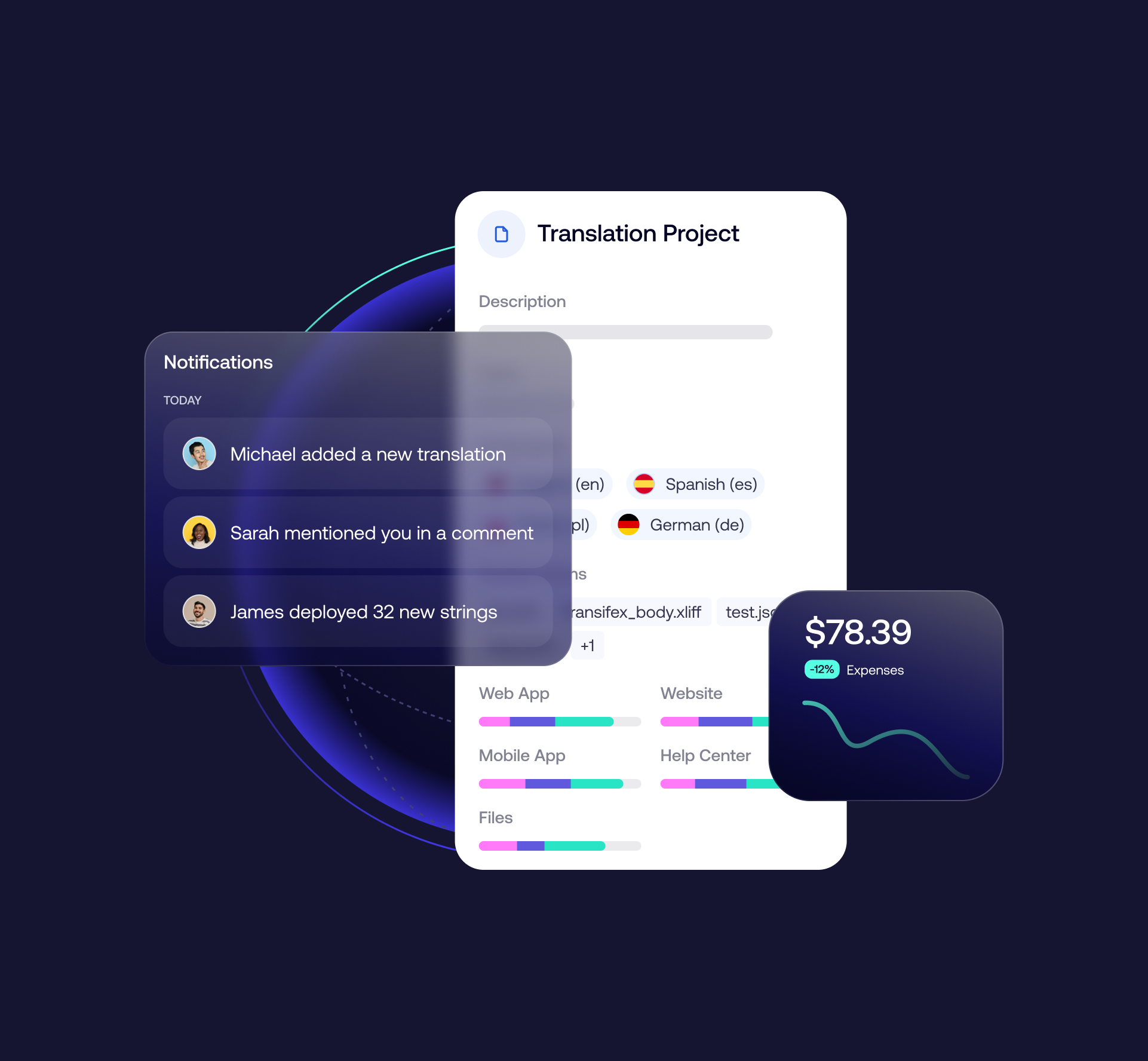
Complete project management
Set up automated workflows for Japanese translation projects using Unicode CLDR data for proper character handling. Configure TM fill-up to instantly apply 100% matches from your Japanese translation memory. Enable AI fill-up to translate new content automatically while respecting Japanese writing systems and cultural conventions. Assign roles to certified Japanese translators, reviewers, and project managers with appropriate permissions for different market segments.
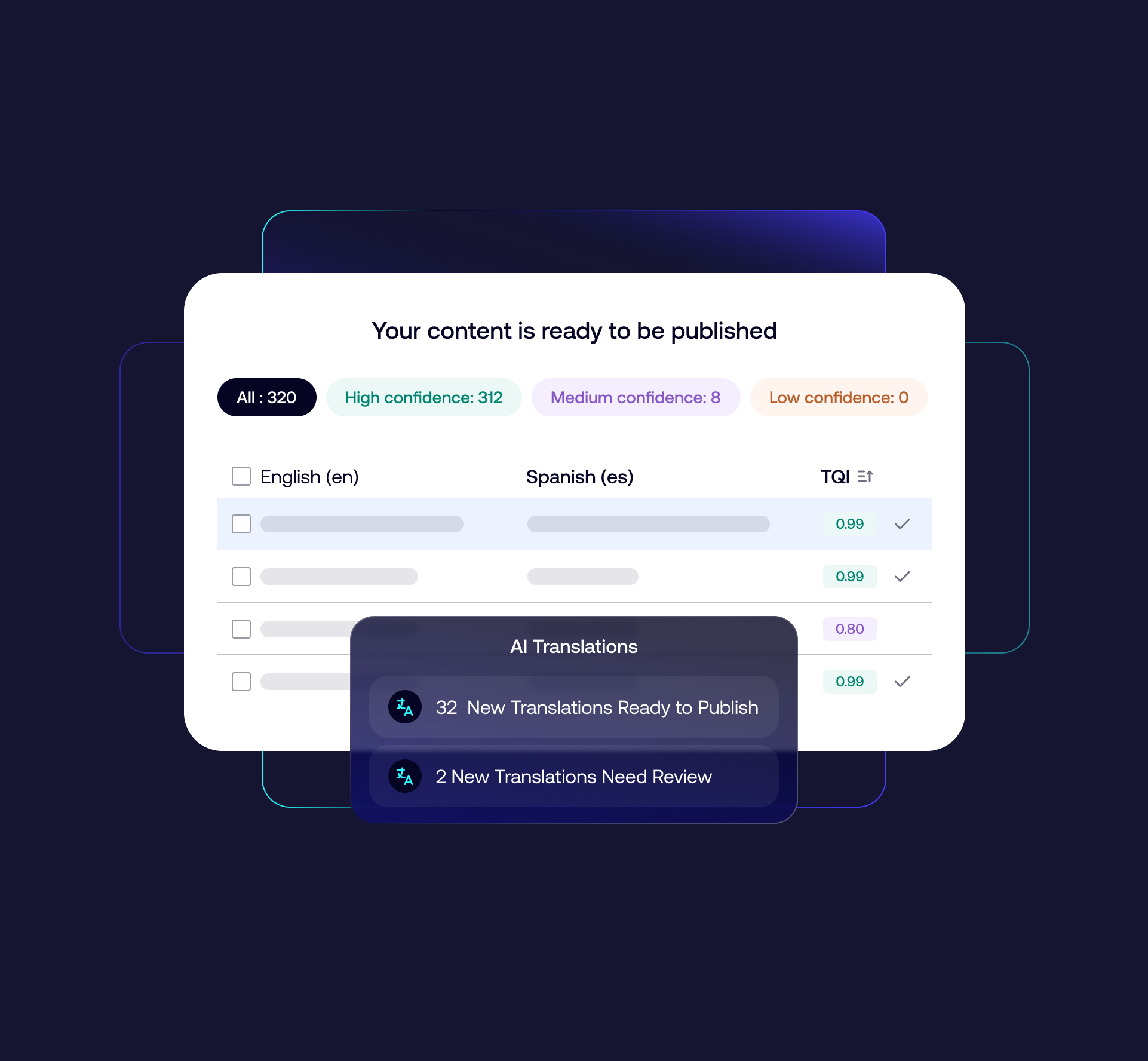
Context-aware AI translation
The system analyzes your Japanese glossary for consistent terminology, references high-similarity translation memory entries, and follows your Japanese style guide instructions. Whether you need formal business Japanese for B2B documents or conversational Japanese for consumer marketing, the AI adapts accordingly while maintaining brand consistency across Japanese-speaking regions.
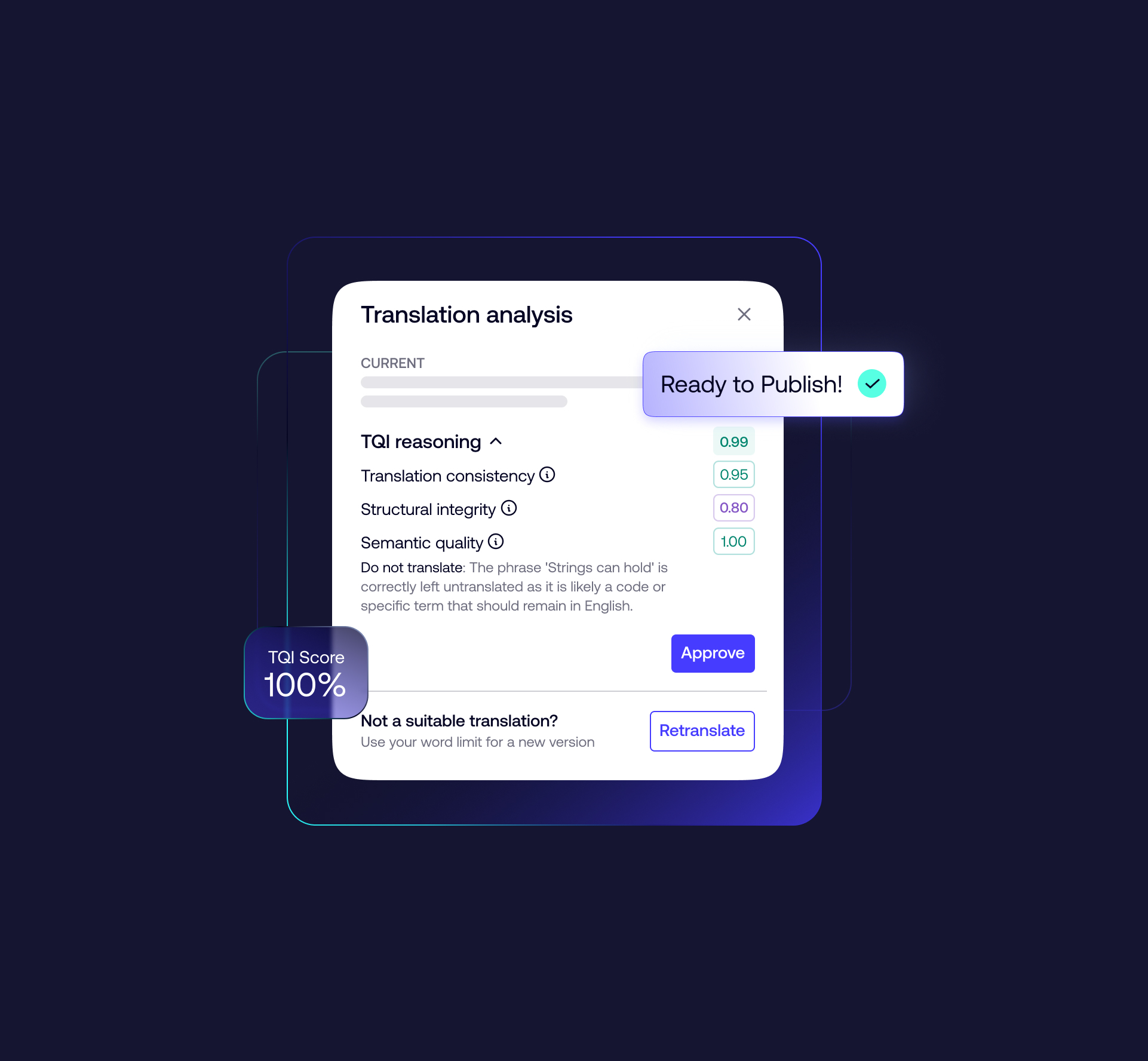
Automated quality control
TQI identifies specific issues like Japanese grammar inconsistencies, inappropriate honorific usage, or cultural appropriateness concerns for different Japanese contexts. Configure workflows to auto-approve high-scoring translations (85%+), route medium-scoring content for quick review by native Japanese speakers, and flag low-scoring translations for comprehensive revision. Track quality trends to improve future Japanese translations.
The only localization platform with native support for over 46 different content types
Translate any type of English content into Japanese—no conversions or plugins needed.
Web and
mobile UI
YAML (.yaml/.yml), JSON (including structured JSON), Gettext PO/POT, Android XML, Apple .strings / .stringsdict—supports Japanese character encoding and text compression
Technical documentation
Markdown (.md / .mdx), Wiki markup (.wiki), XLIFF (.xliff/.xlf/.xml)—perfect for Japanese technical manuals and software documentation
Marketing
assets
PowerPoint (.pptx), HTML / XHTML, Landing pages—handles Japanese cultural adaptation automatically
Fileless (API-based content)
Phrase-based localization from APIs, Figma plugin, HubSpot—uses ICU syntax, supports Japanese metadata, and exports as JSON or XLIFF
Business and legal documents
Microsoft Word (.docx), Excel (.xlsx/.xlsm/.xltx/.xltm), PDF (via conversion)—ideal for Japanese legal compliance and business communications
Subtitles and video captions
SubRip (.srt), SubViewer (.sub), YouTube captions (.sbv), WebVTT (.vtt)—translated in-context with built-in editor preview for Japanese voice-over projects

Scale Japanese localization—without the headaches
Transifex helps you translate English to Japanese with speed, precision, and automation—all while maintaining brand consistency and cutting manual work.
Launch new content, reach Japanese markets, and scale your multilingual strategy with confidence across Japan's $15 billion software market and broader Asia-Pacific opportunities.
Frequently asked English to Japanese questions
Still got questions? Talk with the Transifex team to see how you can improve the quality of your Japanese translations and save money.
How many people speak Japanese globally?
Japanese is spoken by approximately 125+ million people worldwide as a native language. Japan accounts for 123 million speakers, with significant populations in Hawaii (12% of population), California, Brazil, and other Japanese communities globally.
What makes Japanese translation more complex than other languages?
Japanese uses three writing systems simultaneously (Hiragana, Katakana, Kanji), has multiple levels of politeness (keigo), and requires cultural context for appropriate communication. Unlike alphabetic languages, Japanese characters represent concepts rather than sounds, requiring deep linguistic and cultural expertise.
Why is Japanese important for business expansion?
Japan represents the world's third-largest economy with GDP exceeding $4 trillion and leads global innovation in technology, automotive, and manufacturing. The Japanese software market alone is valued at over $15 billion annually, making Japanese localization essential for tech companies targeting Asia-Pacific markets.
How does Transifex handle Japanese character encoding and text formatting?
Transifex AI uses Unicode UTF-8 standards with full support for Japanese character sets including Hiragana, Katakana, and Kanji. The platform automatically handles text compression advantages where Japanese content typically requires 30-50% less space than English, alerting designers to layout optimizations.
What industries benefit most from English to Japanese translation?
Technology, gaming, automotive, manufacturing, and e-commerce industries see significant benefits from Japanese localization. Japan's strength in innovation and high consumer standards create opportunities across software localization, technical documentation, and marketing materials targeting sophisticated Japanese consumers.
Can Transifex handle certified Japanese translations for business use?
Transifex supports professional Japanese translation workflows that meet ISO 17100:2015 standards. Our platform enables certified Japanese translators to work with business documents, technical manuals, and legal materials while maintaining consistency and accuracy for Japanese regulatory compliance.
How long does English to Japanese translation take with Transifex?
Translation speed depends on content volume and complexity. Transifex AI provides instant Japanese translations with TQI quality scoring, while human review processes can be automated based on quality thresholds. Most projects see 70% faster completion times compared to traditional workflows while maintaining native-level quality.
Learn more about scaling your software localization efforts
Software localization is more than the translation of your product UI. Different language settings, plural forms, frameworks used and visual relevancy factors are only a few other things to consider.




